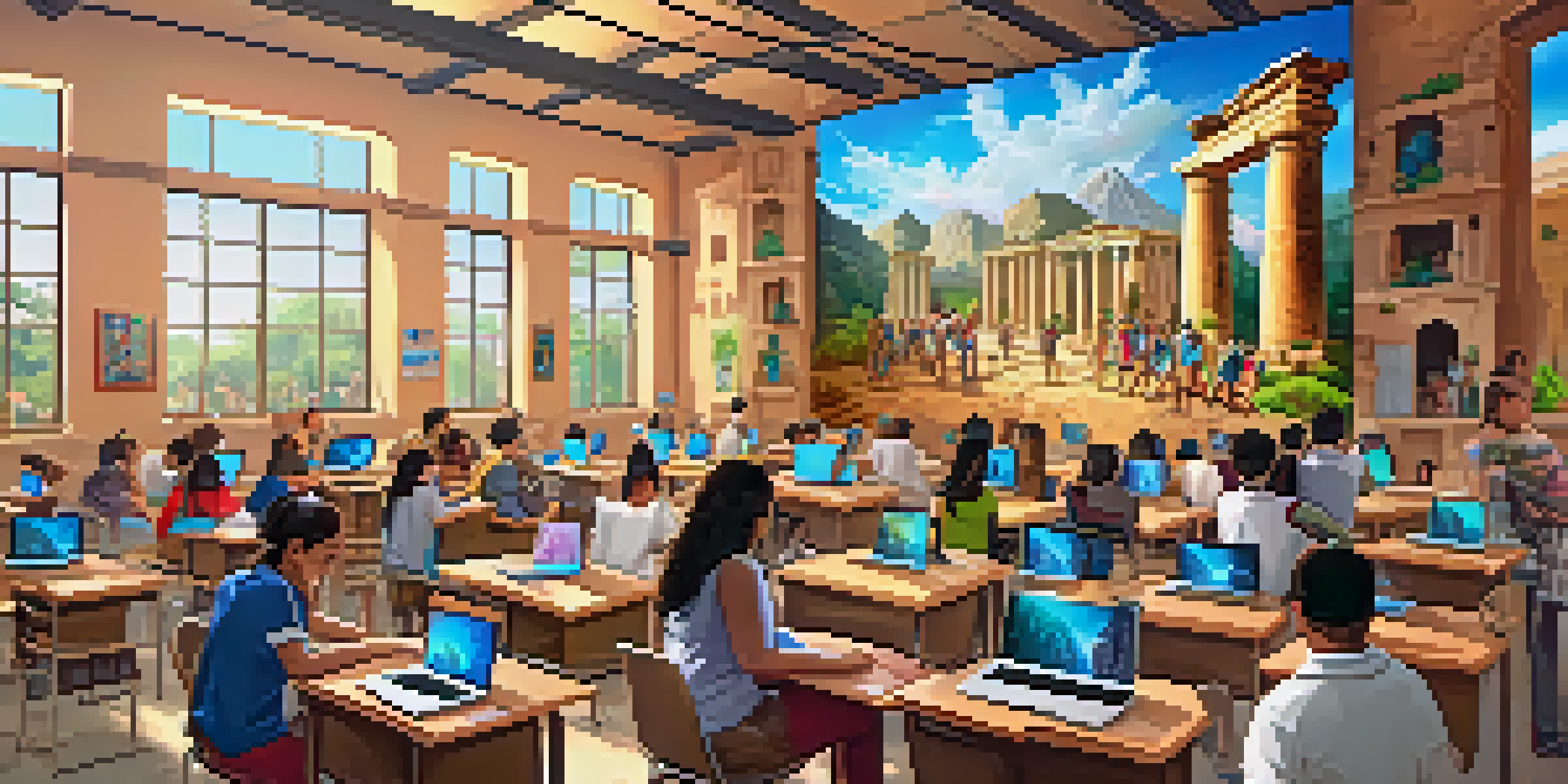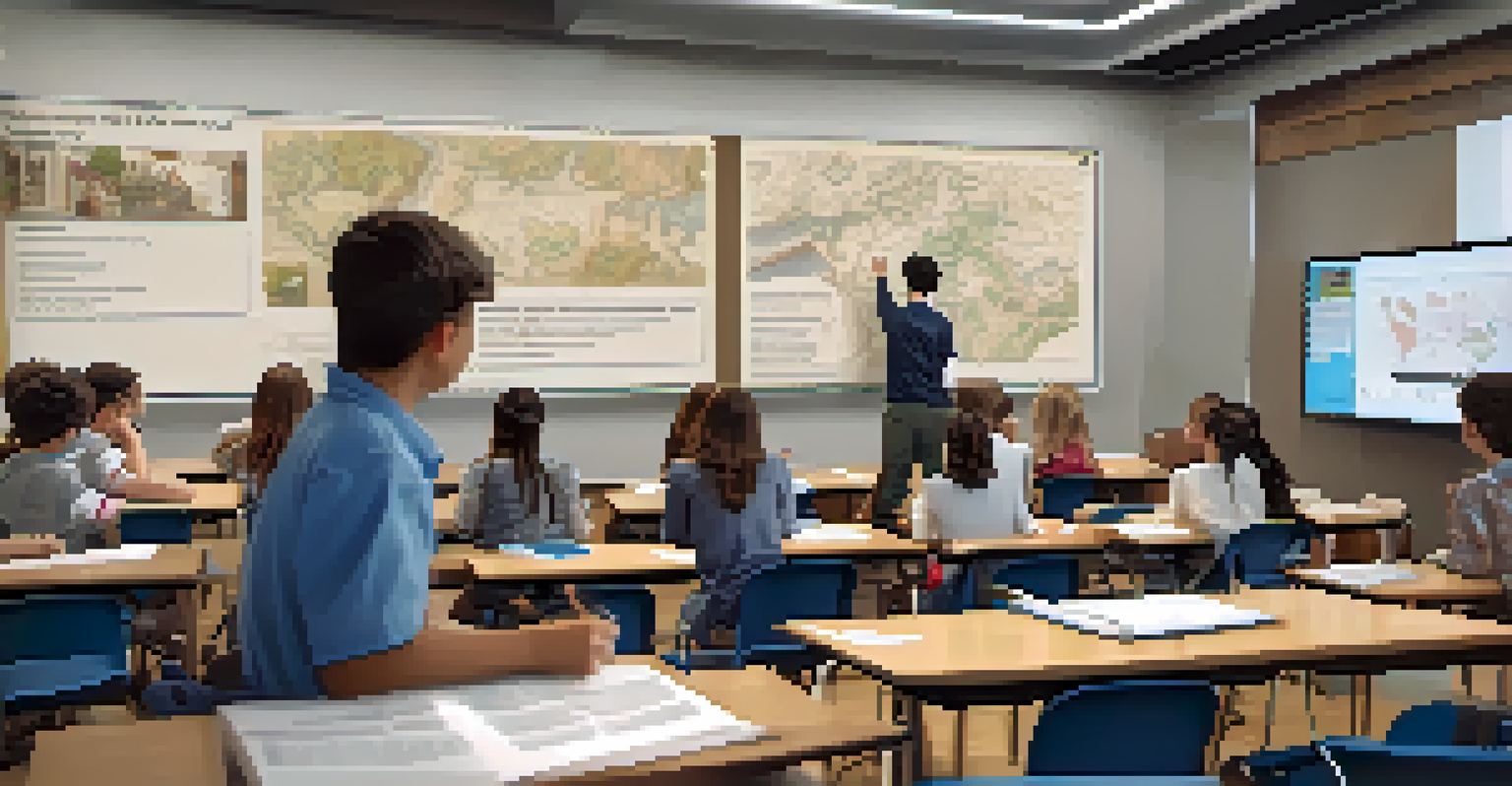The Role of Virtual Reality in Blended Learning Frameworks

Understanding Blended Learning and Its Benefits
Blended learning combines traditional face-to-face teaching with online elements, creating a flexible learning environment. This approach allows learners to engage with material at their own pace while still benefiting from direct interaction with educators. For example, students might watch video lectures online and then discuss key concepts during in-person classes, enabling a deeper understanding.
Blended learning is not about replacing traditional methods, but about enhancing them with the best of both worlds.
The beauty of blended learning lies in its adaptability; it caters to various learning styles and preferences. Visual learners can engage with video content, while those who prefer hands-on activities can participate in in-person workshops. This flexibility not only enhances engagement but also promotes better retention of information.
Moreover, blended learning can be more cost-effective for institutions, as it often reduces the need for physical resources and allows for larger class sizes in online settings. As education evolves, understanding the role of technology in this framework becomes essential for both educators and students.
What is Virtual Reality and Its Key Features?
Virtual reality (VR) immerses users in a computer-generated environment, allowing them to interact with digital surroundings in a seemingly real way. By using VR headsets, learners can explore virtual landscapes, conduct simulations, or engage in interactive scenarios that would be impossible or impractical in the real world. This immersive experience is what sets VR apart from traditional online learning.

One of the most fascinating features of VR is its ability to provide experiential learning opportunities. Imagine being able to walk through ancient ruins or conduct a virtual chemistry experiment without the constraints of a physical lab. This kind of engagement not only captivates students but also enables them to practice skills in a safe and controlled setting.
Blended Learning Offers Flexibility
Blended learning combines online elements with traditional teaching, allowing students to engage at their own pace while benefiting from direct interaction.
Additionally, VR can cater to diverse learning needs, making education more inclusive. For instance, students with disabilities can experience scenarios that might be challenging in real life, allowing them to learn and practice in a supportive environment.
How Virtual Reality Enhances Engagement in Learning
One of the primary challenges in education is maintaining student engagement. Virtual reality offers a dynamic solution by creating captivating experiences that draw learners in. For example, a history lesson can transform into a virtual tour of historical events, making the content more relatable and exciting.
Virtual reality is not just a technology; it's a new way of experiencing education that opens doors to creativity and engagement.
Engaged students are more likely to participate actively in their learning journey. VR encourages exploration and curiosity, as learners can manipulate their surroundings and experiment without fear of failure. This hands-on approach fosters a sense of ownership over their education, leading to better outcomes.
Moreover, the novelty of VR can reignite interest in subjects that students may find dull when taught through traditional methods. By integrating immersive experiences, educators can tap into the enthusiasm of learners and inspire a passion for knowledge that extends beyond the classroom.
Integrating VR into Blended Learning Frameworks
Integrating VR into blended learning frameworks requires careful planning and a clear understanding of learning objectives. Educators must consider how VR can complement existing methods rather than replace them. For instance, a teacher could assign VR experiences as homework, followed by in-class discussions to reinforce concepts.
It's essential to select appropriate VR content that aligns with curriculum goals. This could range from virtual field trips to interactive simulations that allow students to apply theoretical knowledge. By thoughtfully incorporating VR, educators can create a cohesive learning experience that enhances understanding.
VR Enhances Student Engagement
Virtual reality immerses learners in interactive environments, making subjects more captivating and fostering a hands-on approach to education.
Additionally, providing training for both educators and students is crucial. Familiarizing everyone with the technology ensures that VR is used effectively and that students can maximize its benefits. This support can significantly enhance the overall learning experience.
Challenges of Implementing VR in Education
While the advantages of VR in blended learning are enticing, there are challenges to consider. One significant hurdle is the cost of VR equipment and software, which may not be feasible for all educational institutions. Schools must weigh the investment against the potential benefits and find ways to obtain funding or grants.
Moreover, not all educators may feel comfortable using technology in the classroom. Professional development and training are essential to ensure that teachers can effectively integrate VR into their lessons. This may require a cultural shift within institutions that prioritize innovative teaching methods.
Lastly, accessibility is a concern. For students who may not have access to VR devices at home, ensuring equal opportunities for engagement is vital. Educators must find ways to provide access within school settings or offer alternative learning methods that accommodate all students.
Real-World Examples of VR in Blended Learning
Many institutions are already reaping the benefits of VR in blended learning frameworks. For instance, universities are using virtual labs for science courses, allowing students to conduct experiments safely and efficiently. This approach not only saves resources but also provides hands-on experience that is crucial for understanding complex concepts.
High schools are also getting creative with VR. Some have implemented virtual field trips, enabling students to explore distant locations and historical sites without leaving the classroom. This innovative approach broadens students' horizons and sparks interest in subjects like geography and history.
Challenges of VR Implementation
Integrating VR into education faces hurdles like high costs, educator training needs, and accessibility issues for all students.
These real-world applications demonstrate that when blended learning and VR come together, the possibilities are endless. As more institutions adopt these technologies, we can expect to see even more creative and effective uses of VR in education.
The Future of VR in Blended Learning Frameworks
The future of VR in blended learning is promising, as advancements in technology continue to unfold. As VR becomes more accessible and affordable, its integration into educational frameworks is likely to expand. This evolution may also lead to the development of more sophisticated content, providing learners with even richer experiences.
Additionally, ongoing research will likely reveal new insights into the effectiveness of VR as a learning tool. Educators can use this information to refine their approaches and better understand how to maximize the potential of VR in their classrooms. The continuous feedback loop will help in crafting more engaging and impactful learning experiences.

Ultimately, as we embrace the future of education, combining blended learning and VR will be essential in preparing students for a rapidly changing world. By fostering creativity, collaboration, and critical thinking, these frameworks can equip learners with the skills they need to thrive in the 21st century.